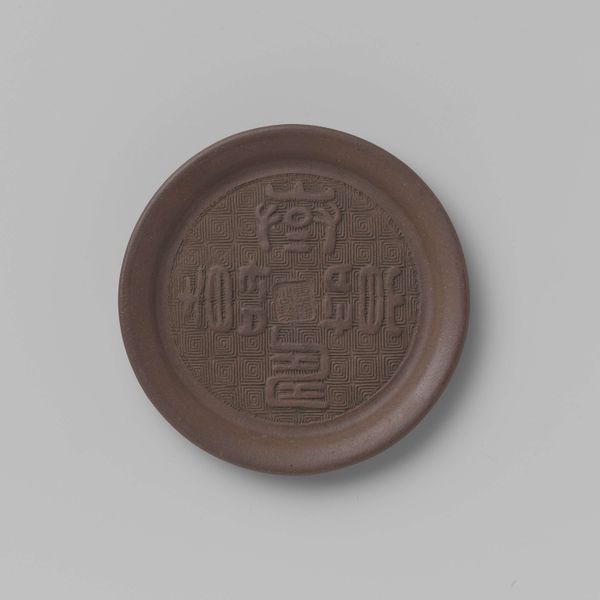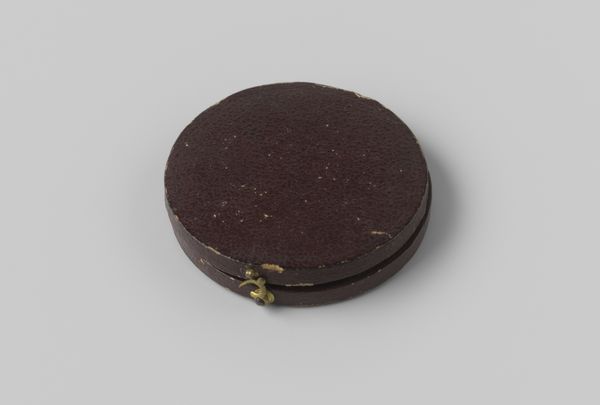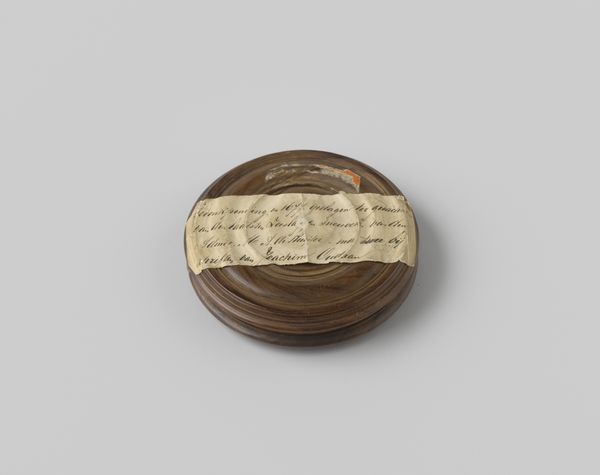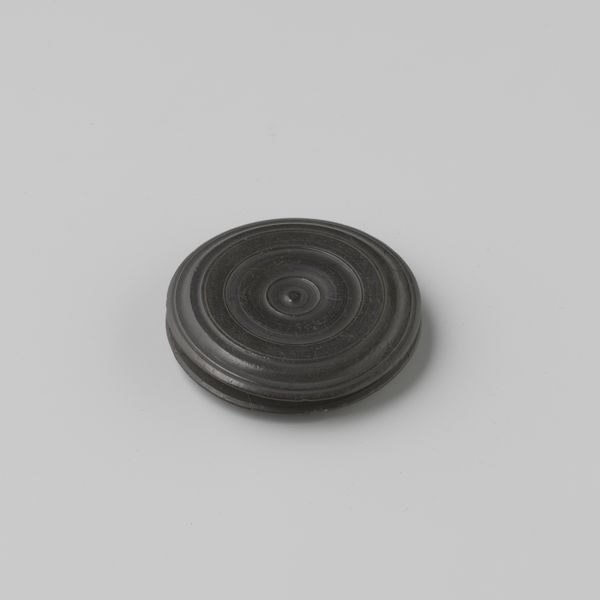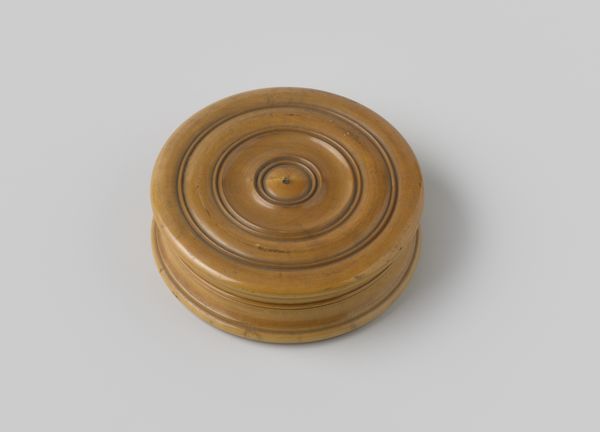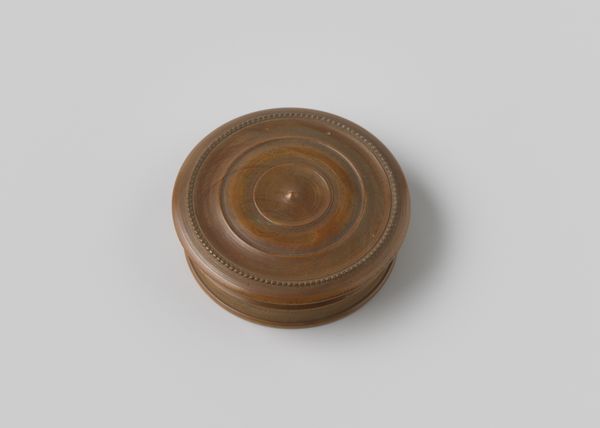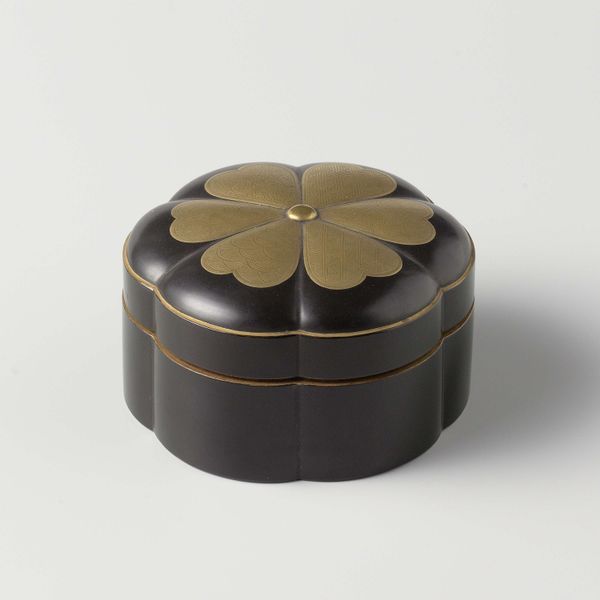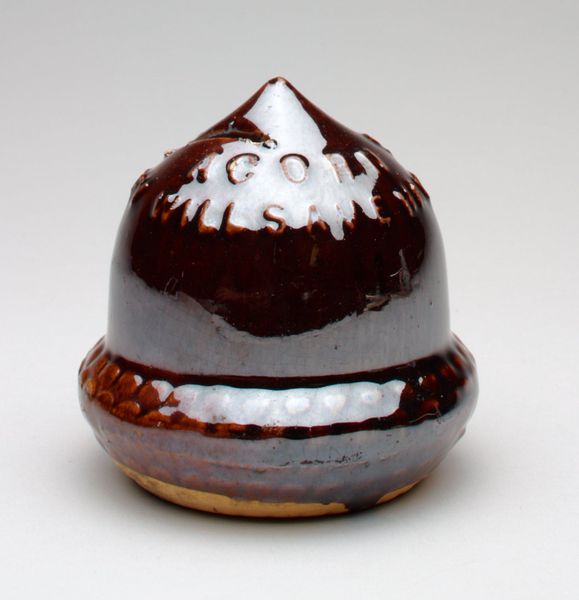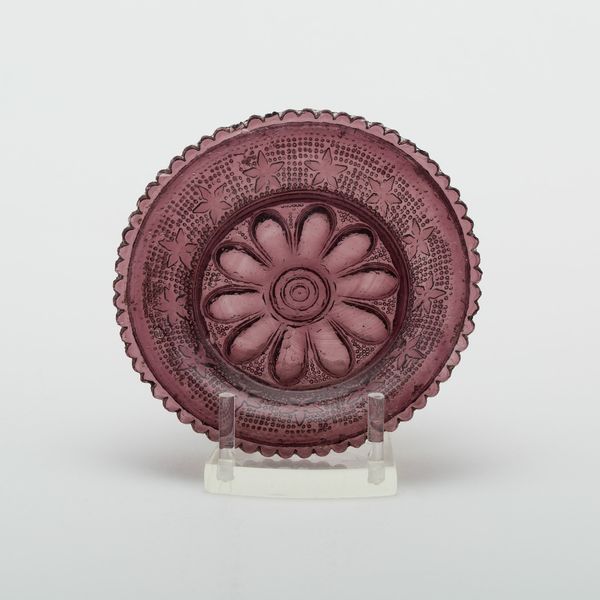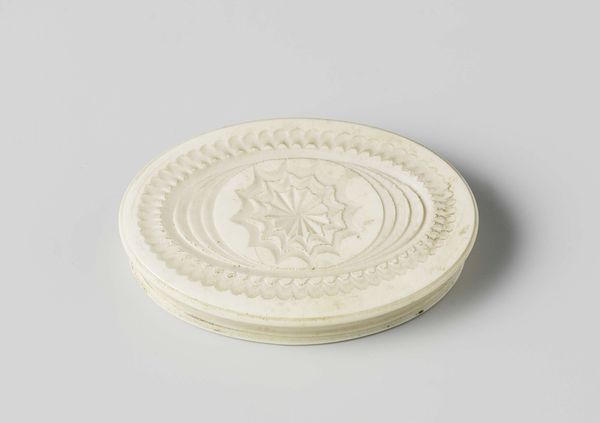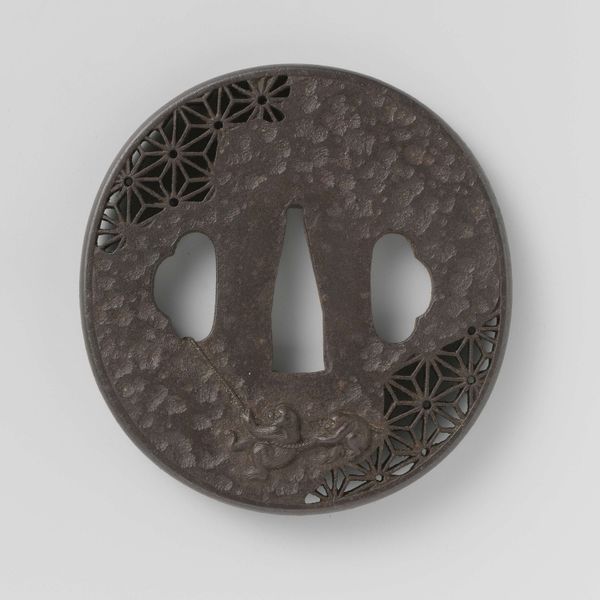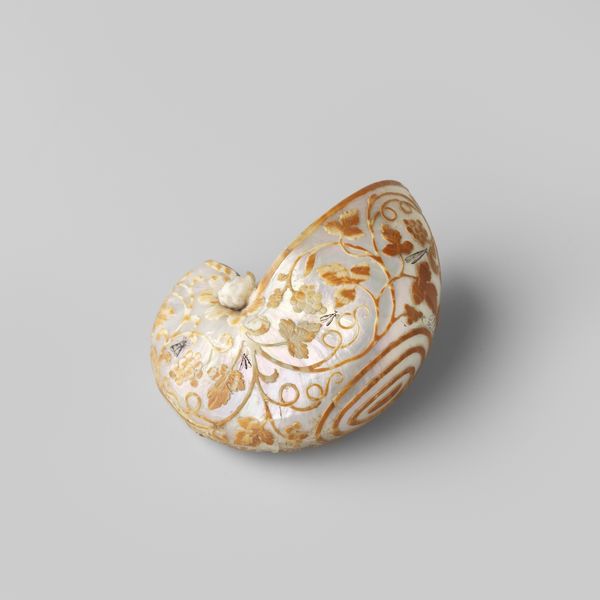
carving, wood
#
carving
#
asian-art
#
geometric
#
wood
#
decorative-art
Dimensions: diameter 7.5 cm, height 2.5 cm
Copyright: Rijks Museum: Open Domain
Curator: Let’s consider this striking Wierookdoos, or incense box. Created sometime between 1825 and 1875 by the artist Zokoku, it exemplifies the artistry of the Edo period. It is made of intricately carved wood. Editor: The rich, reddish-brown hue immediately strikes me. It almost pulses with warmth, and the swirling patterns evoke a sense of tranquility, like smoke itself curling upwards. Curator: Precisely! Incense boxes held great importance in the tea ceremony. The selection and display of incense and related objects became signifiers of social status and taste, often shaping collecting habits within certain circles. The rising merchant class of the era eagerly adopted such customs, and thus the objects themselves grew in value. Editor: The spiraling motif—a type of endless knot, perhaps—could suggest longevity, continuity, or even a pathway to enlightenment. Considering its use with incense, do you think this piece would’ve been intended as a symbolic aid during meditation? Curator: It's entirely possible. Symbolism in such objects reinforced hierarchical values while subtly aligning commerce with traditional virtues. Furthermore, these designs also played into an art market of competing lineages and styles. Editor: What I find compelling is the almost tactile nature of the carving. The deep relief invites one to trace the design with their fingers, deepening one’s connection with the ritual use. The very shape of this is inviting as if meant to be handled frequently. Curator: It represents a convergence, doesn't it? A beautifully crafted object of utilitarian purpose becomes a potent signifier of cultural identity. It echoes how artwork in these settings can be shaped by and reflect societal tensions and trends. Editor: Seeing it this way shifts my perspective. The elegant exterior wasn’t just aesthetics, but an index of wealth and social competition masked with supposed harmony. Thanks to this bit of socio-cultural unpacking, I look at it quite differently now. Curator: Exactly, the convergence of ritual and its societal importance helps in understanding how aesthetics can mirror our communal history.
Comments
No comments
Be the first to comment and join the conversation on the ultimate creative platform.

